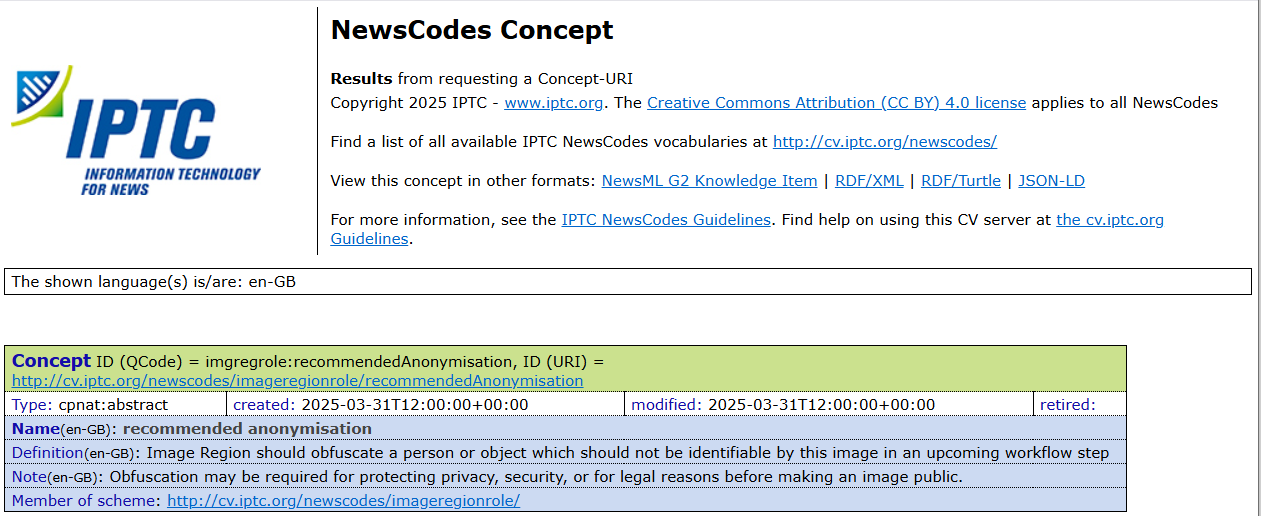The IPTC (International Press Telecommunications Council) releases almost every year an update of the Photo Metadata Standard, a widely accepted standard for storing nontechnical information about images.
In the standard’s 2019.1 version (released in December 2019), a new “Image Region” property was added. This property can be used to define one or more areas within an image and store specific metadata that only applies to that region (and not to the entire image).
One of the metadata properties this Image Region can have is a Region Role, indicating a region’s role among other regions of that image or other images. Region roles get their value from a controlled vocabulary, a limited set of terms. To aid users, the IPTC has created the IPTC Image Region Role NewsCodes controlled vocabulary.
Since the inception of INDIGO’s GRAPHIS software, communication has been ongoing with Michael W. Steidl (former IPTC Managing Director and current co-lead of the IPTC Photo Metadata Working Group) to discuss the term “anonymised”. INDIGO needs this term to describe the role of image regions that are used to black out, pixelate, or blur faces and number plates.
Even though INDIGO could determine this term in its own GRAPHIS Image Region vocabulary, it is always better if an international body defines it. INDIGO is thus very happy that the IPTC incorporated the term “anonymised” in its official controlled vocabulary today.

